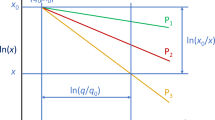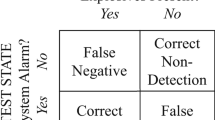Abstract
Twelve pipe bombs were exploded, and the fragments were collected and weighed. The distribution of fragment masses was shown to follow a Weibull-type form M (n)=M0 [1 − exp (−Bnλ)] when RDX-based military explosives were used and a bimodal distribution when commercial explosives were used. The constant, B, was a function of the mass of fragments recovered, making its use inappropriate in a forensic context where complete collection of the fragments would not be possible. For RDX-based explosives with added Mg or Al powder, the value of the constant, λ, was reduced compared to that of the RDX-based explosive without metal powder additions. An alternative fragment distribution formula, log [(100 M (N))/M0]=FWDM [m(N)/ M0], can also be used to distinguish between explosives, although the correlation coefficient is inevitably somewhat lower and the scatter between the results of nominally identical tests can be greater. The coefficient, FWDM, has a dependence on the mass of fragments collected, restricting its utility in forensic contexts.
Similar content being viewed by others
References
H.P. Tardif and T.S. Sterling: “Explosively Produced Fractures and Fragments in Forensic Investigations,”J. Forensic Sci., 1967,12(3), pp. 247–72.
R. Gurney: Report 405, Ballistics Research Laboratory, Aberdeen, MD. Quoted in M.A. Meyers,Dynamic Behavior of Materials(New York: John Wiley, 1994): pp. 229–43.
N.F. Mott:Proc. Royal Society A, 1947,189, pp. 300–08.
M. Held:Tactical Missile Warheads, J. Carleone, ed., AIAA, Washington, DC, 1993, pp. 387–464.
J.C. Oxley, J.L. Smith, E. Resende, E. Rogers, R.A. Strobel, and E.C. Bender: “Improvised Explosive Devices: Pipe Bombs,”J. Forensic Sci., 2001,46(3), pp. 510–34.
A. Roine:HSC Chemistry Version 2.03, Outukompu Research Oy, Pori, Finland.
Shock Waves and High-Strain-Rate Phenomena in Metals, M.A. Meyers and L.E. Murr, ed., 1981, Plenum, New York, pp. 1033–39.
J. Akhavan:The Chemistry of Explosives, Royal Society of Chemistry, London, 1998, pp. 69–96.
H. Kast:Zeitung für das gesamte Schiess- und Sprengstoffwesen-Nitrocellulose, 8, 1913, pp. 65–68. Quoted in B.T. Federoff and O.E. Sheffield, ed.,Encyclopaedia of Explosives and Related Items (Dover, NJ, Picatinny Arsenal, 1962): pp. B265–97.
P.W. Cooper and S.R. Kurowski:Introduction to the Technology of Explosives, Wiley VCH, New York, 1996, pp. 72–80.
Author information
Authors and Affiliations
Rights and permissions
About this article
Cite this article
Dean, R., Edwards, M.R. Fragment distribution as an aid to forensic failure investigations at the scene of explosions. Practical Failure Analysis 2, 33–40 (2002). https://doi.org/10.1007/BF02715417
Received:
Revised:
Published:
Issue Date:
DOI: https://doi.org/10.1007/BF02715417




